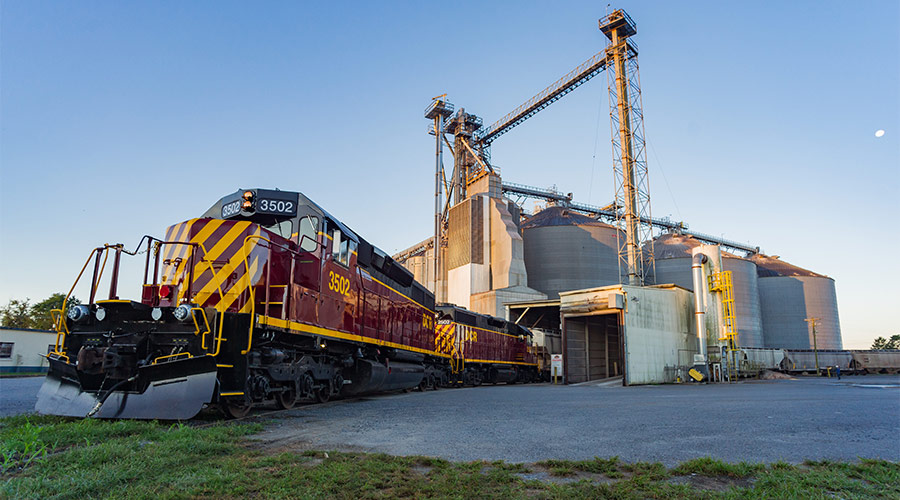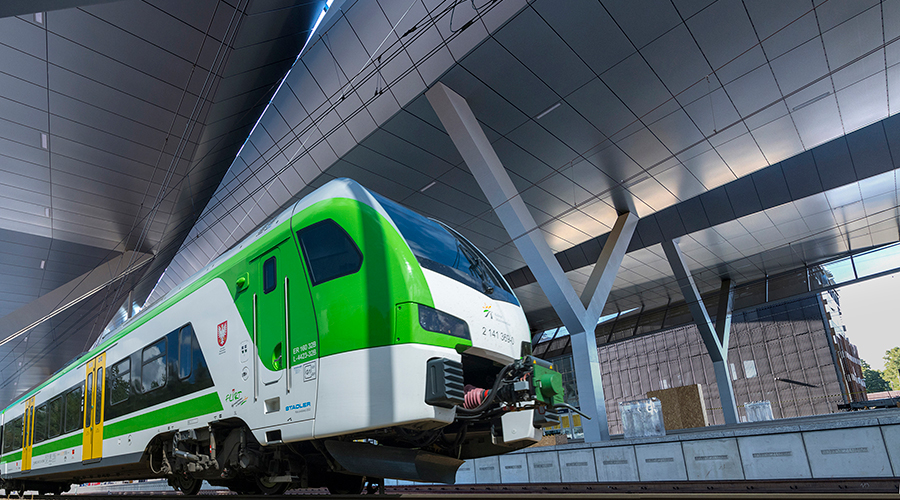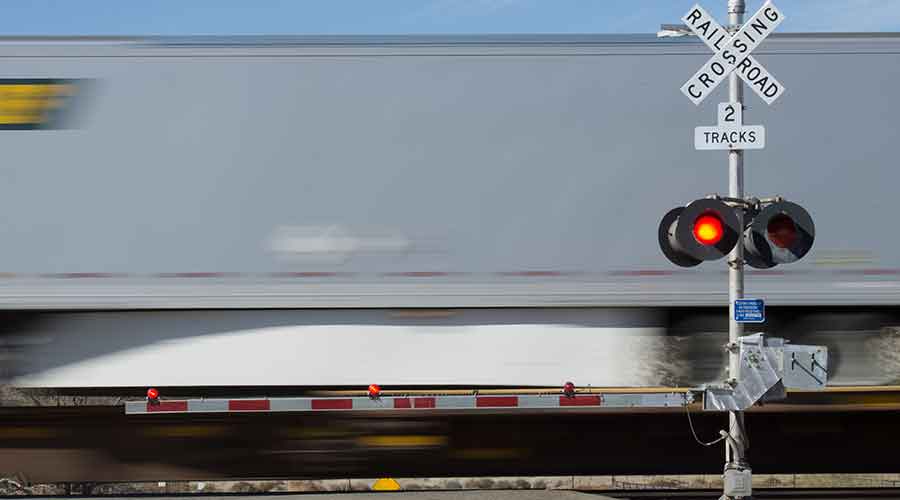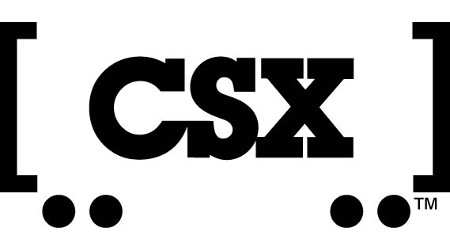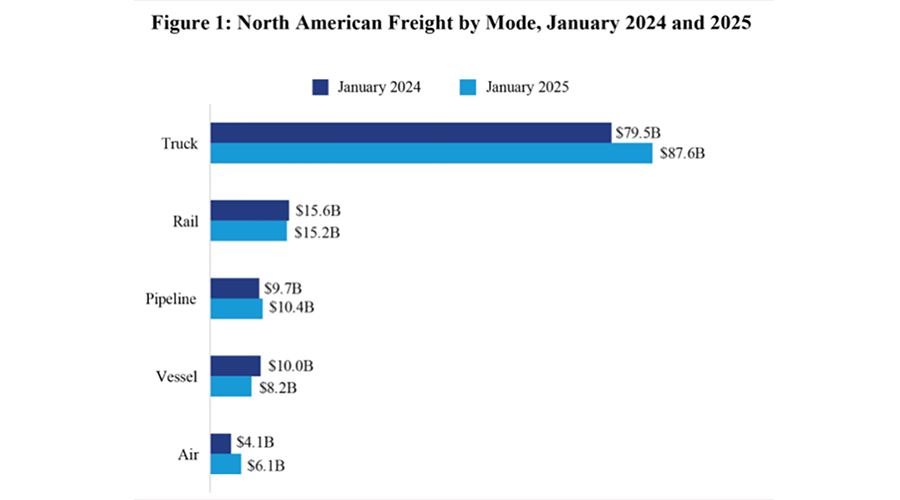Newsletter Sign Up
Stay updated on news, articles and information for the rail industry
Stay updated on news, articles and information for the rail industry
Rail News Home
Passenger Rail
Rail News: Passenger Rail
10/3/2001
Rail News: Passenger Rail
New bill enters high-speed rail funding debate
advertisement
If U.S. Rep. Don Young (R-Alaska) gets his way, high-speed rail could obtain a strong financial boost — but not necessarily with Amtrak operating the trains.
Young, chairman of the House Committee on Transportation and Infrastructure, Sept. 25 introduced legislation that would provide $71 billion in railroad infrastructure expansion and improvements.
The Rail Infrastructure Development and Expansion Act for the 21st Century (RIDE-21) (H.R. 2950) would provide $36 billion in tax-exempt bonds for high-speed rail projects over a 10-year span; $35 billion in loans and loan guarantees for freight and commuter-rail improvements, including $7 billion for short lines; and $35 million per year through 2009 for corridor planning and technology development.
In February, Sen. Joseph Biden (D-Del.) introduced in the Senate a similar bill, High-Speed Rail Investment Act of 2001 (S. 250), which would allow Amtrak to sell $12 billion in bonds. Bondholders would receive a refund on their federal income taxes instead of an interest payment.
Biden-bill opponents argue that $12 billion wouldn’t even scratch the surface of what’s needed to initiate high-speed rail nationwide and a June General Accounting Office report stated "the tax credit for Amtrak bonds would cost the U.S. Treasury between $16.6 billion and $19.1 billion (in nominal dollars) over 30 years."
And, as Amtrak critics often point out, speeds on most federally designated "high-speed" routes would increase only to 110 mph — much slower than the typical definition of "high-speed" rail.
Perhaps S. 250’s greatest liability is having Amtrak’s name attached: "Amtrak’s own data shows that it loses millions of dollars on almost every route it operates," said Arizona Republican Sen. John McCain in a statement prepared in July.
Despite these criticisms of the $12 billion high-speed rail bill, some of pricier RIDE-21’s points might raise some eyebrows, as well. H.R. 2950 would fund a major part of the infrastructure to complete a high-speed corridor designed for 125 mph cruising. Although this meets the standard definition of "high-speed rail," passengers in some corridors would save only minutes traveling at 125 mph as opposed to 110 mph — and the cost to electrify the corridors with minor travel-time benefits could be prohibitive.
Also, Amtrak would be banned from competing for the funds. Instead, states and compacts of states would develop high-speed rail proposals, which the DOT secretary would review.
"States, not Amtrak, control the bond proceeds, how they are managed and how they are spent," said Young in a prepared statement.
This also means that if Amtrak wanted to use RIDE-21 funds to improve its own Northeast Corridor infrastructure, it could do so only if employed by the NEC states to operate lines constructed or improved in their jurisdictions.
Amtrak would be free to compete for operating rights to any developed lines. But, because Amtrak currently is the only national passenger rail provider in the United States — and because Amtrak is nearing its operational self-sufficiency deadline in little more than a year — the stipulation might be irrelevant.
Young, chairman of the House Committee on Transportation and Infrastructure, Sept. 25 introduced legislation that would provide $71 billion in railroad infrastructure expansion and improvements.
The Rail Infrastructure Development and Expansion Act for the 21st Century (RIDE-21) (H.R. 2950) would provide $36 billion in tax-exempt bonds for high-speed rail projects over a 10-year span; $35 billion in loans and loan guarantees for freight and commuter-rail improvements, including $7 billion for short lines; and $35 million per year through 2009 for corridor planning and technology development.
In February, Sen. Joseph Biden (D-Del.) introduced in the Senate a similar bill, High-Speed Rail Investment Act of 2001 (S. 250), which would allow Amtrak to sell $12 billion in bonds. Bondholders would receive a refund on their federal income taxes instead of an interest payment.
Biden-bill opponents argue that $12 billion wouldn’t even scratch the surface of what’s needed to initiate high-speed rail nationwide and a June General Accounting Office report stated "the tax credit for Amtrak bonds would cost the U.S. Treasury between $16.6 billion and $19.1 billion (in nominal dollars) over 30 years."
And, as Amtrak critics often point out, speeds on most federally designated "high-speed" routes would increase only to 110 mph — much slower than the typical definition of "high-speed" rail.
Perhaps S. 250’s greatest liability is having Amtrak’s name attached: "Amtrak’s own data shows that it loses millions of dollars on almost every route it operates," said Arizona Republican Sen. John McCain in a statement prepared in July.
Despite these criticisms of the $12 billion high-speed rail bill, some of pricier RIDE-21’s points might raise some eyebrows, as well. H.R. 2950 would fund a major part of the infrastructure to complete a high-speed corridor designed for 125 mph cruising. Although this meets the standard definition of "high-speed rail," passengers in some corridors would save only minutes traveling at 125 mph as opposed to 110 mph — and the cost to electrify the corridors with minor travel-time benefits could be prohibitive.
Also, Amtrak would be banned from competing for the funds. Instead, states and compacts of states would develop high-speed rail proposals, which the DOT secretary would review.
"States, not Amtrak, control the bond proceeds, how they are managed and how they are spent," said Young in a prepared statement.
This also means that if Amtrak wanted to use RIDE-21 funds to improve its own Northeast Corridor infrastructure, it could do so only if employed by the NEC states to operate lines constructed or improved in their jurisdictions.
Amtrak would be free to compete for operating rights to any developed lines. But, because Amtrak currently is the only national passenger rail provider in the United States — and because Amtrak is nearing its operational self-sufficiency deadline in little more than a year — the stipulation might be irrelevant.


 LRW Honors Amtrak’s Acheson As Railway Woman Of The Year
LRW Honors Amtrak’s Acheson As Railway Woman Of The Year
 From Editor-In-Chief Foran: Of Gender Equity And Inclusion
From Editor-In-Chief Foran: Of Gender Equity And Inclusion
 Spotlight On Some Of Today’s Rail Safety Products
Spotlight On Some Of Today’s Rail Safety Products
 Women of Influence in Rail eBook
Women of Influence in Rail eBook
 railPrime
railPrime